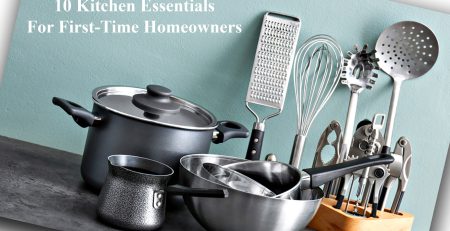Psychological Impact of Kitchen Decor Design on Our Eating Habits
The kitchen is not only a place for preparing food, but also a space where our eating behaviors and habits can be influenced. The way a kitchen is designed can have a significant impact on our food choices, portion sizes, and overall eating behaviors.
Understanding the psychological impact of kitchen design on our eating habits is important because it can help us create a space that promotes healthy eating behaviors and overall well-being. By implementing specific design elements, we can help ourselves make better food choices,
consume appropriate portion sizes, and feel more mindful and intentional in our eating habits. This topic is important because it can lead to a healthier lifestyle and overall improvement in our physical and mental health.
Clutter and Chaos in the Kitchen
- How a cluttered and chaotic environment can affect our food choices and portion sizes
- Examples of clutter-reducing design elements that can promote healthier eating habits

Clutter and chaos in the kitchen can have a significant impact on our eating behaviors and habits. A cluttered and chaotic environment can make it more difficult to make healthy food choices and control portion sizes, leading to overeating and poor nutrition. On the other hand, a well-organized and clean kitchen can promote healthier eating habits and lead to a more mindful and intentional approach to food.
One example of how clutter and chaos can affect our eating habits is a messy refrigerator. If our refrigerator is disorganized and cluttered, we may be less likely to find healthy foods and more likely to reach for convenient, unhealthy options.
Similarly, if our kitchen counters are cluttered with dishes, papers, and other items, we may feel overwhelmed and stressed, which can lead to mindless eating or snacking on unhealthy foods.
To promote a clutter-free and organized kitchen, it is important to focus on kitchen decor and layout. Design elements such as ample storage space, clear counter surfaces, and easy-to-use organizational tools can all contribute to a more organized and clean kitchen. For example, using cabinet organizers, pantry shelves, and drawer dividers can make it easier to find and access healthy foods, while reducing clutter and stress.
In addition, incorporating decor elements that promote cleanliness and organization can help create a calm and peaceful environment in the kitchen. For example, using neutral colors or light shades, such as white or pale blue, can make the kitchen feel more spacious and clean. Adding plants or herbs can also contribute to a fresh and clean atmosphere, while helping to purify the air.
Overall, reducing clutter and chaos in the kitchen can have a positive impact on our eating habits and overall well-being. By incorporating design elements that promote organization and cleanliness, we can create a space that encourages healthy food choices and mindful eating.
Color Scheme and Lighting
- The impact of color on appetite and hunger
- The effects of dim vs. bright lighting on mindful eating and food consumption
Color scheme and lighting are important design elements that can have a significant impact on our eating habits in the kitchen. The colors and lighting in our kitchen can affect our appetite and hunger levels, as well as our overall mood and well-being.
The colors used in kitchen decor can play a role in our food choices and portion sizes.
For example, warm colors such as red, orange, and yellow are believed to stimulate the appetite, while cool colors like blue and green are thought to have a calming effect and suppress hunger.
By incorporating colors that promote a healthy appetite, we can encourage ourselves to make nutritious food choices and consume appropriate portion sizes.
Lighting is also an important factor in kitchen decor and can affect our eating habits. Bright lighting can promote mindful eating and help us to focus on our food choices, while dim lighting can encourage us to consume more food without paying attention to our portion sizes. To promote healthy eating habits, it is important to use appropriate lighting in the kitchen.
One effective way to incorporate color and lighting in kitchen decor is by using specific products that are designed to promote healthy eating habits. For example, some products include portion control plates, which use color and portion sizes to encourage healthy eating habits. These plates can help us to understand proper portion sizes and promote mindful eating.
Another way to incorporate color and lighting in kitchen decor is by choosing a color scheme that promotes a healthy appetite and overall well-being.
For example, using light blue or green colors on the walls and accents can create a calming atmosphere while encouraging healthy food choices. Adding pendant lighting over the dining table can also create a warm and inviting ambiance, which can promote mindful eating and social interaction.
In conclusion, color scheme and lighting are important design elements to consider when designing a kitchen that promotes healthy eating habits. By incorporating appropriate colors and lighting, we can create a space that encourages nutritious food choices, appropriate portion sizes, and overall well-being.
Kitchen Layout and Organization
- The relationship between kitchen layout and eating habits
- Examples of kitchen design elements that promote healthy eating behaviors, such as visibility of healthy foods and portion control tools
The layout and organization of a kitchen are crucial factors in promoting healthy eating habits and overall well-being. A well-designed kitchen can encourage us to make nutritious food choices and reduce the temptation to reach for unhealthy snacks or convenience foods.
One important aspect of kitchen layout and organization is the relationship between different functional areas.
For example, the relationship between the stove, refrigerator, and sink can affect our ability to prepare healthy meals quickly and efficiently. By positioning these key elements in a logical and accessible way, we can make it easier to prepare and cook healthy meals.
Another important factor in kitchen layout and organization is the use of space. A cluttered and cramped kitchen can lead to stress and frustration, which can in turn lead to unhealthy eating habits. By maximizing storage space and incorporating smart organizational ideas, we can create a spacious and organized kitchen that promotes healthy eating habits.
In terms of kitchen decor, the color combination can also have a significant impact on our eating habits. For example, using a neutral color scheme such as white or pale blue can create a calming and relaxing atmosphere, which can promote mindful eating and reduce stress levels. Additionally, using bright and bold colors such as red or orange can stimulate the appetite and encourage us to make healthy food choices.
When considering the best kitchen color for promoting healthy eating habits, it is important to choose a color that matches the overall style and design of the kitchen.
For example, if the kitchen has a modern or minimalist style, using a bold color such as red or yellow can create a vibrant and lively atmosphere. Alternatively, if the kitchen has a more traditional style, using neutral colors such as beige or brown can create a warm and inviting atmosphere that encourages healthy eating habits.
In conclusion, kitchen layout and organization are important factors in promoting healthy eating habits and overall well-being. By designing a kitchen that is functional, spacious, and well-organized, we can create a space that promotes mindful eating and nutritious food choices. Incorporating appropriate color combinations can also contribute to a healthy and inviting kitchen environment.
Psychological Tricks for Promoting Healthy Eating Habits
- The use of psychological tricks in kitchen design to encourage healthy eating behaviors, such as using smaller plates and bowls, positioning healthy foods at eye level, and creating designated areas for healthy snacks
Promoting healthy eating habits can be a challenge, but there are several psychological tricks that can be used to encourage healthy food choices and discourage unhealthy ones.
By understanding how the human mind works and how it responds to certain stimuli, we can design our kitchens and dining spaces to promote healthy eating habits.
One psychological trick for promoting healthy eating habits is to use smaller plates and bowls. Research has shown that people tend to consume less food when they eat from smaller plates and bowls,
as it creates the illusion of a fuller plate. Using smaller plates and bowls can help to reduce portion sizes and promote mindful eating.
Another psychological trick is to make healthy foods more visible and accessible. For example, placing fruits and vegetables at eye level in the refrigerator and pantry can encourage us to choose these healthy options over less nutritious snacks. Similarly, placing a bowl of fresh fruit on the kitchen counter can make healthy snacking more convenient and appealing.
Creating a pleasant and inviting dining environment can also promote healthy eating habits. Using soft lighting and calming colors can create a relaxing atmosphere that encourages mindful eating and reduces stress levels.
Additionally, incorporating natural elements such as plants and fresh flowers can create a welcoming and refreshing atmosphere that promotes healthy eating habits.
Using descriptive and positive language when talking about food can also encourage healthy eating habits. For example, describing a salad as “crisp and refreshing” rather than “low-calorie” can make it sound more appealing and satisfying. Additionally, using positive affirmations such as “I choose to eat healthy foods because they make me feel good” can reinforce positive eating habits and promote overall well-being.
Finally, incorporating social support and accountability can be an effective psychological trick for promoting healthy eating habits. Eating with friends and family can make healthy eating more enjoyable and social, while joining a healthy eating group or working with a nutritionist can provide accountability and support for making healthy food choices.
In conclusion, there are several psychological tricks that can be used to promote healthy eating habits. By using smaller plates, making healthy foods more visible and accessible, creating a pleasant dining environment, using positive language, and incorporating social support and accountability, we can design our kitchens and dining spaces to promote healthy eating habits and overall well-being.













